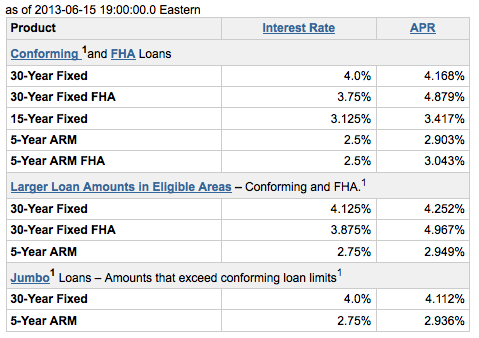
Содержание

The RBI on behalf of the government to curb liquidity shortfalls. It is a promissory note with a guarantee of payment at a later date. The funds collected are usually used for short term requirements of the government. It is also used to reduce the overall fiscal deficit of the country. Return on investment is low in Treasury bills instruments due to shorter maturity period ahead return on investment is higher in Treasury Bonds due to longer maturity period. Thus, Mrs. Harrison buys a 1-year $1,000 treasury bill for $970.
This increases the exposure of investors to the government bond market, which creates higher cash flows to the capital market. Unlike other debt securities, T bills don’t offer a periodic interest payments; instead, they are sold at a discount and the investor realizes a profit when he or she sells it for the face value at maturity. Investors also tend to follow these investments to analyzeinterest rates.
Are cash and T-bills really your best bet now?.
Posted: Tue, 14 Feb 2023 08:00:00 GMT [ source ]
Fixed income refers to assets and securities that bear fixed cash flows for investors, such as fixed rate interest or dividends. U.S. Treasury bills are short-term government bonds and are issued with five terms. T-Bill prices tend to drop when other investments such as equities appear less risky, and the U.S. economy is in an expansion. Conversely, during recessions, investors tend to invest in T-Bills as a safe place for their money spiking the demand for these safe products.
This allows investors, like you, to make a small profit on your investment, making it a win-win situation for all the stakeholders. Treasury Bills are a type of these government securities that help the government meet their short-term capital requirements and provide fixed income to investors. Treasury bills (T-bills) offer short-term investment opportunities, generally up to one year. At present, the Government of India issues four types of treasury bills, namely, 14-day, 91-day, 182-day and 364-day.
Treasuries Put your cash to work with a high-yield Treasuries account. Repo rate is the return earned on a repo transaction expressed as an annual interest rate. Par value is nothing but the face value of the security which is ₹ 100 for G-Secs. When the price of a security is equal to face value, the security is said to be trading at par. Transactions of any value other than the standard market lot size of ₹ 5 crore are referred to as odd lot. Generally, the value is less than the ₹ 5 crore with a minimum of ₹10,000/-.
The Reserve Bank of India’s website hosts the government’s press releases, which provide information about the T-bill auction. They come in denominations of $1,000 and offer coupon payments every six months. The 10-year T-note is the most frequently quoted Treasury when assessing the performance of the bond market. It is also used to show the market’s take on macroeconomic expectations. Investors can buy or sell Treasury bills on the secondary market. Also, there are mutual funds and Exchange-Traded Funds that hold previously issued T-bills.
They act as a liability to the Indian government as they need to be paid within a stipulated time. However, they are redeemed at par value at the time of maturity. Also, The Reserve Bank of India issues treasury bills calendar for auction. It announces the exact date of the auction, the amount to be auctioned and the maturity dates before every auction.
These money market instruments are issued at a discounted value compared to the nominal value. Upon maturity, treasury bills can be redeemed at their nominal value. This way, the holders of these bills can earn a profit on the amount initially invested by them.
Rebalancing the portfolio wherein the securities are sold once they become short term and new securities of longer tenor are bought could be followed to manage the portfolio risk. However, rebalancing involves transaction and other costs and hence needs to be used judiciously. Market risk and reinvestment risk could also be managed through Asset Liability Management by matching the cash flows with liabilities. ALM could also be undertaken by matching the duration of the assets and liabilities. 24.4 Yield to Maturity is the expected rate of return on a bond if it is held until its maturity. The price of a bond is simply the sum of the present values of all its remaining cash flows.
RBI, in consultation with State Governments announces, the indicative quantum of borrowing on a quarterly basis. All State Governments have issued General notifications which specify the terms and conditions for issue of SDL. Before every auction, respective state governments issue specific notifications indicating details of the securities being issued in the particular auction. RBI places a press release on its website and also issues advertisements in leading English and vernacular newspapers of the respective states. 3.3 The Reserve Bank of India conducts auctions usually every Wednesday to issue T-bills of 91day, 182 day and 364 day tenors.
On the next working day of the date auction, the accepted bids with prices are displaying. The successful bidders have to collect letters of acceptance from the RBI and deposit the same along with the cheque for the amount due on RBI within 24 hours of the announcement of auction results. They also provide an investment medium for investing the temporary surpluses of State Government, semi-government departments and foreign central banks.
Yield fluctuates according to numerous factors including global markets and the economy. Debt obligations of the Government that have maturities of one year or less are normally called Treasury Bills or T-Bills. Treasury Bills are short-term obligations of the Treasury/ Government.
Treasury bills also do not offer any tax deduction under Section 80C of the Income Tax Act, of 1961. Once the treasury bills mature, the government debits the amount from your Demat account to pay into the linked bank account. The T-bill provides a return on investment of 12.40 percent, but because you held it for 91 days, you will receive this return proportionally.
The difference between the discounted sale price and the face value the Bill acts as the interest paid to investors for owning a Treasury Bill. T-bills are generally short-term investments, meaning they’re issued for a month to a year. The government issues Treasury bills to raise funds to meet short-term needs.

The https://1investing.in/ investment amount when purchasing treasury bills is INR 25,000. If you want to purchase over and above this amount, you will need to do it in multiples of INR 25,000. The U.S. Treasury also offers a short-term security that is a lot like a T-bill called a Cash Management Bill .
The Fed will increase or decrease the fed funds rate in an effort to contract or expand the monetary policy and the availability of money in the economy. A lower rate allows banks to have more money to lend while a higher fed funds rate decreases money in the system for banks to lend. Treasury bills are one of several types of debt issued by the U.S.

The date of auction and the last date of submission of tenders are notified by the RBI through a press release. The Treasury Department sells T-Bills during auctions using a competitive and non-competitive bidding process. Noncompetitive bids—also known as non-competitive tenders—have a price based on the average of all the competitive bids received.
For instance, the rate of return is generally higher in 2022 than for those issued in 2021. Investors can bid based on the rate of return announced in a particular week. On behalf of the central government, the RBI auctions treasury bills every Friday for 91-day via authorised commercial banks and registered primary dealers. Retail investors can bid and purchase them directly by opening a Retail Direct Scheme Account with the RBI.
1.1 A bond is a debt instrument in which an investor loans money to an entity which borrows the funds for a defined period of time at a variable or fixed interest rate. Bonds are used by companies, municipalities, states and sovereign governments to raise money to finance a variety of projects and activities. In the United States, treasury bills are issued through the country’s central bank.
All OTC treasury bills means s are required to be mandatorily reported on the NDS-OM reported segment for settlement. Reporting on NDS-OM is a two stage process wherein both the seller and buyer of the security have to report their leg of the trade. Players in the financial markets closely watch treasury bill yields, which impact the yields on corporate and municipal bonds, as well as bank interest rates. Save taxes with ClearTax by investing in tax saving mutual funds online. Our experts suggest the best funds and you can get high returns by investing directly or through SIP.
Treasury Inflation-Protected Securities are bonds that offset the effects of inflation by adjusting the value of the principal. Investors who want more information can get more information from the research division of theTreasuryDirectwebsite. Treasury yields can rise and fall, depending on the market and economic conditions. For example, yields fell significantly during the COVID-19 pandemic of 2020. Vikki Velasquez is a researcher and writer who has managed, coordinated, and directed various community and nonprofit organizations.